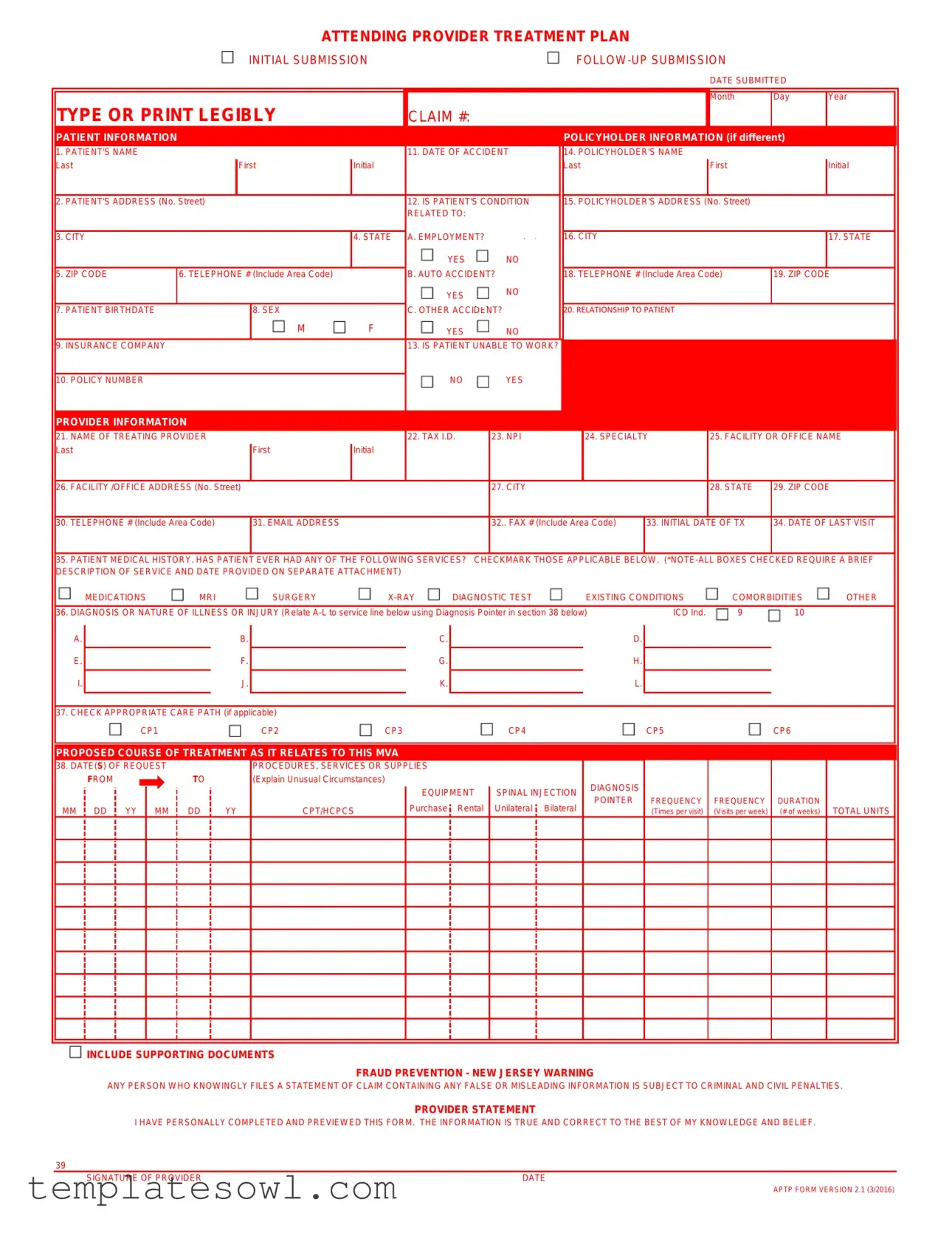What is the purpose of the Provider Treatment Plan form?
The Provider Treatment Plan form is designed to collect essential information about a patient’s treatment needs, especially in relation to medical claims due to accidents. This includes details about the patient's condition, treatment history, and proposed care paths. Submitting this form ensures that the appropriate insurance coverage is accessed for the patient's treatment plan.
Who needs to fill out the form?
The form must be completed by the treating provider. This could be a physician or other healthcare professionals involved in the patient's care. The provider ensures that all information is accurate and comprehensive, reflecting the patient's current medical status and treatment plan.
What information is required about the patient?
Several pieces of vital information about the patient are necessary, including their full name, address, date of birth, and insurance details. The form also asks about the patient's medical history, including previous treatments, primary and secondary diagnoses, and any relevant accident details. All of this information helps create a clear picture of the patient’s situation.
What are the sections of the form related to treatment?
The form includes sections where the provider specifies the proposed course of treatment and the requested dates for any treatment. There are also areas to detail the care path selected and to provide specific service request codes, which are crucial for accurate billing and insurance processing.
Are attachments required with this form?
Yes, attachments are often necessary. The form includes checkboxes for various supporting documents such as progress notes, test results, and medical history. Providers must ensure that any relevant documents are included as backup to the information provided on the form.
What happens if false information is submitted?
Submitting false or misleading information can lead to serious consequences. In New Jersey, for instance, individuals who knowingly file fraudulent claims may face both criminal and civil penalties. It’s crucial for providers to be diligent in completing the form accurately to avoid potential legal issues.
How is the form submitted?
The completed Provider Treatment Plan form should be submitted through the specified method outlined by the insurance company—this may be via mail, fax, or an electronic submission portal. Always double-check submission guidelines to ensure a smooth process and timely approval of the treatment plan.


 INCLUDE SUPPORTING DOCUMENTS
INCLUDE SUPPORTING DOCUMENTS